Economics > STUDY GUIDE > ECN 150Exam 1 study guide. (All)
ECN 150Exam 1 study guide.
Document Content and Description Below
Scarcity - the limited nature of society's resources, given society's unlimited wants and needs (page 6) Economics - the study of how individuals and society allocate their limited resources to satis... fy their unlimited wants (page 6) Microeconomics - the study of the individual units that make up the economy (page 7) Macroeconomics - the study of the overall aspects and workings of an economy (page 7) Incentives - factors that motivate a person to exert effort (page 8) opportunity cost - the highest-valued alternative that must be sacrificed to get something else (page 13) economic thinking - a purposeful evaluation of the available opportunities to make the best decision possible (page 15) marginal thinking - the evaluation of whether the benefit of one more unit of something is greater than its cost (page 15) markets - systems that bring buyers and sellers together to exchange goods and services (page 17) Barter - involves individuals trading a good they already have or providing a service in exchange for something they want. (page 17) Trade - the voluntary exchange of goods and services between two or more parties (page 19) comparative advantage - the situation where an individual, business, or country can produce at a lower opportunity cost than a competitor can (page 19) positive statement - an assertion that can be tested and validated; it describes "what is" (page 29) normative statement - an opinion that cannot be tested or validated; it describes "what ought to be" (page 29) ceteris paribus - meaning "other things being equal," the concept under which economists examine a change in one variable while holding everything else constant (page 30) endogenous factors - the variables that can be controlled for in a model (page 31) exogenous factors - the variables that cannot be controlled for in a model (page 31) production possibilities frontier - a model that illustrates the combinations of outputs that a society can produce if all of its resources are being used efficiently (page 33) law of increasing opportunity cost - law stating that the opportunity cost of producing a - good rises as a society produces more of it (page 36) specialization - limiting one's work to a particular area (page 39) absolute advantage - the ability of one producer to make more than another producer with the same quantity of resources (page 41) consumer goods - goods produced for present consumption (page 47) capital goods - goods that help produce other valuable goods and services in the future (page 47) investment - the process of using resources to create or buy new capital (page 47) variable - a quantity that can take on more than one value (page 57) scatterplot - a graph that shows individual (x,y) points (page 60) negative correlation - condition occurring when two variables move in opposite directions (page 60) positive correlation - condition occurring when two variables move in the same direction (page 60) slope - the change in the rise along the y axis (vertical) divided by the change in the run along the x axis (horizontal) (page 61) causality - condition existing when one variable influences another (page 65) reverse causation - condition occurring when causation is incorrectly assigned among associated events (page 66) market economy -an economy in which resources are allocated among households and firms with little or no government interference (page 72) invisible hand - a phrase coined by Adam Smith to refer to the unobservable market forces that guide resources to their highest-valued use (page 72) competitive market - a market in which there are so many buyers and sellers that each has only a small (negligible) impact on the market price and output (page 72) imperfect market - a market in which either the buyer or the seller has an influence on the market price (page 74) market power - a firm's ability to influence the price of a good or service by exercising control over its demand, supply, or both (page 74) monopoly - condition existing when a single company supplies the entire market for a particular good or service (page 74) quantity demanded - the amount of a good or service that buyers are willing and able to purchase at the current price (page 75) law of demand - the law that, all other things being equal, quantity demanded falls when the price rises, and rises when the price falls (page 76) demand schedule - a table that shows the relationship between the price of a good and the quantity demanded (page 76) demand curve - a graph of the relationship between the prices in the demand schedule and the quantity demanded at those prices (page 76) market demand - the sum of all the individual quantities demanded by each buyer in the market at each price (page 77) purchasing power - the value of your income expressed in terms of how much you can afford (page 80) normal good - a good consumers buy more of as income rises, holding other things constant (page 80) inferior good - a good purchased out of necessity rather than choice (page 81) complements - two goods that are used together; when the price of a complementary good rises, the demand for the related good goes down (page 81) substitutes - goods that are used in place of each other; when the price of a substitute good rises, the quantity demanded of that good falls and the demand for the related good goes up (page 81) quantity supplied - the amount of a good or service that producers are willing and able to sell at the current price (page 85) law of supply - the law that, all other things being equal, the quantity supplied of a good rises when the price of the good rises, and falls when the price of the good falls (page 85) supply schedule - a table that shows the relationship between the price of a good and the quantity supplied (page 85) supply curve - a graph of the relationship between the prices in the supply schedule and the quantity supplied at those prices (page 85) market supply - the sum of the quantities supplied by each seller in the market at each price (page 87) inputs - the resources (labor, land, and capital) used in the production process (page 90) subsidy - a payment made by the government to encourage the consumption or production of a good or service (page 90) equilibrium - condition occurring at the point where the demand curve and the supply curve intersect (page 94) equilibrium price - the price at which the quantity supplied is equal to the quantity demanded; also known as the market-clearing price (page 94) equilibrium quantity - the amount at which the quantity supplied is equal to the quantity demanded (page 95) law of supply and demand -the law that the market price of any good will adjust to bring the quantity supplied and the quantity demanded into balance (page 95) shortage - market condition when the quantity supplied of a good is less than the quantity demanded; also called excess demand (page 95) surplus - market condition when the quantity supplied of a good is greater than the quantity demanded; also called excess supply (page 95) elasticity - a measure of the responsiveness of buyers and sellers to changes in price or income (page 112) price elasticity of demand - a measure of the responsiveness of quantity demanded to a change in price (page 113) immediate run - a period of time when there is no time for consumers to adjust their behavior (page 115) short run - in microeconomics, the period of time when consumers can make decisions that reflect their short-term wants, needs, or limitations and can partially adjust their behavior (page 115) long run - in microeconomics, the period of time when consumers make decisions that reflect their long-term wants, needs, or limitations and have time to fully adjust to market conditions (page 115) total revenue - the amount a firm receives from the sale of goods and services (page 126) income elasticity of demand - measurement of how a change in income affects spending (page 132) cross-price elasticity of demand - measurement of the responsiveness of the quantity demanded of one good to a change in the price of a related good (page 133) price elasticity of supply- a measure of the responsiveness of the quantity supplied to a change in price; sometimes called elasticity of supply or supply elasticity (page 137) welfare economics - the branch of economics that studies how the allocation of resources affects economic wellbeing (page 152) willingness to pay - the maximum price a consumer will pay for a good; also called the reservation price (page 153) consumer surplus - the difference between the willingness to pay for a good (or service) and the price that is paid to get it (page 153) willingness to sell - the minimum price a seller will accept to sell a good or service (page 155) producer surplus - the difference between the price that the seller receives and the price at which the seller is willing to sell a good or service (page 155) total surplus - the sum of consumer surplus and producer surplus; a measure of the well-being of all participants in a market, absent any government intervention; also known as social welfare (page 158) efficient - describing an outcome when allocation of resources maximizes total surplus (page 160) equity - the fairness of the distribution of benefits among the members of a society (page 160) excise taxes - taxes levied on a particular good or service (page 163) incidence - the burden of taxation on the party who pays the tax through higher prices, regardless of whom the tax is actually levied on (page 163) deadweight loss - the decrease in economic activity caused by market distortions (page 166) price controls - an attempt to set prices through government involvement in the market (page 186) price ceiling - a legally established maximum price for a good or service (page 186) black markets - illegal markets that arise when price controls are in place (page 187) rent control - a price ceiling that applies to the market for apartment rentals (page 192) price gouging laws - temporary ceilings on the prices that sellers can charge during times of emergency (page 194) price floor - a legally established minimum price for a good or service (page 196) minimum wage - the lowest hourly wage rate that firms may legally pay their workers (page 202) ----------------------------------------------------------------------------------------------------------------- When total surplus is maximized, the market will be efficient. (true) It is likely that consumer surplus will decrease and producer surplus will decrease because demand for computers is inelastic. Consumers will share the tax burden with producers. Which statement correctly describes the unemployment situation in South Africa? Unemployment is high despite economic growth following the end of the apartheid. If specialization and outsourcing can harm domestic workers, why do countries still engage in trade? The gains from trade far outweigh the costs, and the economy benefits overall. What creates comparative advantage? specialization A health insurance company may offer its policyholders a discount on their premiums if they prove that they have stopped smoking. What type of incentive is the health insurance company offering? direct Laura leaves her job as an accountant, where she earns $80,000 per year, to start her own business. After the first year, her business earns a profit of $60,000. How would an economist describe the profitability of Laura’s career change? Laura had a loss of $20,000. Although generous disability insurance can help those who have been permanently injured, it can also increase the likelihood that individuals will falsely claim to be disabled. This likelihood is a(n) indirect incentive. The government places warnings on cigarette and liquor packages. These warnings serve as a(n) negative incentive. The basic goal of economics is to address the scarcity problem created because the population’s desire for goods exceeds the ability to produce them. Instead of deciding to finish high school, Cecily could have decided to work full-time. How would an economist explain her decision to receive her high school degree? The benefit of going to high school was greater than the benefit of working full-time. Circular flow model involves individuals trading goods they already have or providing services in exchange for something they want. When Noah’s parent tells him not to study economics because it is a pointless discipline, why is he or she INCORRECT? Economics is a tool used to understand what happens in a world where there are not enough resources to produce all the goods and services that are wanted and needed. Trade-offs occur in all of the following scenarios EXCEPT a shopper wants to buy two equally appealing shirts totaling $50, and has $35 to spend on each. Choosing to trade increases specialization, decreasing opportunity costs. According to marginal thinking, an individual will continue to consume until after the benefit of additional consumption is less than its cost. An activity’s marginal benefit is equal to the marginal cost at the optimal quantity. Microeconomics is the study of individual decision-making units. Marginal decisions are said to be made on the sum of unit(s) under consideration. Shoppers at supermarkets often abandon their empty shopping carts at various locations in the parking lot, despite the risk of damage to vehicles or the additional labor cost of retrieving those carts. How might an economist explain this behavior? The perceived potential benefit of going to a cart return location is less than the time and energy cost to the shopper. The patent system encourages innovation by creating a powerful financial reward for creativity. In the area of many college campuses, parking spaces are often scarce. If these parking spaces have parking meters, which population described below would pay for parking? those that are unwilling to take risks, believe there is a high chance that they will be caught if they don’t pay for parking, and place a high value on doing the “right” thing Which of the following is an example of an unintended consequence? A tax rebate on electric cars results in increased household electricity consumption. When most economists wake up in the morning, their first decision is whether to hit the snooze bar on the alarm clock. What statement best represents their thought process as rational decision makers? The marginal benefit of sleeping 10 more minutes is greater than the marginal benefit of 10 more minutes of work. The government controls for some indirect incentives in safety net social programs by limiting payment to a specified time period. Low prices for water in the developed world may lead individuals to believe it is NOT a scarce resource. What is the opportunity cost of purchasing a college textbook? the cost savings from not purchasing a book Rational decision making under conditions of scarcity requires individuals to understand that trade-offs are necessary. What is the opportunity cost of taking an exam? the highest valued alternative that someone gave up to prepare for and attend the exam When an individual chooses to act, he or she is said to be motivated by incentives Entrepreneurs are willing to take risks because the patent and copyright system provides an exclusive right to sell the product for a period of time. An economist is an individual who would be LEAST able to answer which research question? how the tastes and preferences of consumers are determined In a growing number of cities, stores are required either not to make available plastic or paper bags or to do so only for an additional fee. If this fee can be refunded when someone recycles the bag, the refund acts as a(n) direct incentive. Why do incentives matter to economists? Incentives explain how people make decisions, and are the key to understanding economics. Bea bakes pastries well, and Lucian raises great herbs. If Lucian trades parsley with Bea in exchange for cupcakes, then both Bea and Lucian are made better off by trade. A parent that pays a child an allowance for doing chores is providing a(n) positive incentive. The patent system acts as a direct positive incentive. A car insurance company is willing to offer accident-free drivers a discount. This is an example of a positive incentive. William can create 30 meals in one hour, or wash 90 dishes in the same time. Jeremy can create 25 meals in one hour, or wash 50 dishes in one hour. Using opportunity cost, who should specialize in what task? Jeremy gives up fewer dish washings per meal creation, so Jeremy should create meals. A nation will engage in voluntary trade if the terms are mutually beneficial for both parties. Many stores are open 24 hours a day. When store managers make the decision to stay open 24 hours, it must be the case that the marginal benefit of staying open all day and the marginal cost to remaining open all day are at least equal. Macroeconomics would be concerned with a single national government choosing to implement trade tariffs. A recession has crippled the national economy, producing a high rate of unemployment. Which of the following would be a microeconomic decision? A Congresswoman decides to delay the purchase of a new car. The United States is able to experience economic growth to the extent that specialization and trade are encouraged. It is crucial to recognize that costs and benefits are separate evaluations made at the margin. Thomas Malthus’s prediction of mass starvation failed to come true because of increases in productivity. An example of a direct negative incentive is threatening to fire those who do not perform well. The opportunity cost to free trade is domestic jobs. If Alexander doesn’t like changing the oil in his car and pays his father to do it for him, he has provided his father with a(n) direct incentive. Google has started a project to scan all books and make those that are not copyrighted available to people free of charge. Why is it important that only books without a copyright are available? If all books were scanned and available free of charge, copyright holders would face a negative incentive to continue writing and publishing books. Rodrigo operates a dry-cleaning service and charges customers $5 per article of clothing. Based on his knowledge of operations, the 1,000 th piece of clothing costs him $4.95 to dry-clean. If he takes additional business, however, the 1,001st piece will cost $5 for the service. Does he take the additional business? Yes. At a $5 cost, he breaks even and is indifferent. He necessarily turns away business when the cost of the additional unit exceeds the income. An example of a direct positive incentive is providing a commission for sales. Actions and activities are encouraged with which type of incentive? positive A mother takes her daughter on an outing and promises her ice cream if she behaves. In addition, she warns her that if she misbehaves, she won’t be allowed to play with her toys at home. The latter is an example of a(n) negative incentive and reinforces the efficacy of the ice cream, a(n) positive incentive. The U.S. federal government imposes a tariff on cheaper steel arriving from other countries. When producers make the decision to purchase domestic steel, what must first occur? The price of foreign steel must be at least equal to or greater than that of domestic steel. Many professors have a policy that punishes individuals if they don’t come to class. Instead of punishing students who don’t attend class, what could the professor do to provide a positive incentive to come to class? Those who come to class are given extra points. The government has been trying to encourage the use of fuel-efficient cars. One way it has been doing this has been by allowing fuel-efficient cars to use a separate highway lane. This encourages people to use fuel-efficient cars because those who place a high value on their scarce time may be encouraged to buy a fuel-efficient car to take advantage of the separate highway lane. In a growing number of cities, stores are required either not to make available plastic or paper bags or to do so only for an additional fee. What kind of incentive is this fee? direct Macroeconomics is the study of the operation of the economy as a whole. On which of the following concepts do economists focus their study when explaining how humans behave? incentives If the United States creates a trade agreement with Vietnam, we know that Vietnam and the United States can both benefit. During a job search, individuals will sometimes accept the lower of two competing salary offers. What would best explain this decision? The total benefits of the lower paying job are greater than the total benefits of the higher paying job. Nicole asked her neighbor to rake the leaves on his lawn because they were blowing into her yard. It takes an hour to rake the yard, regardless of who performs the task. He responded that it wouldn’t be rational for him to do so, but he would be willing to hire someone else to rake. Why would this be the case? Her neighbor is a lawyer who values his time at $200 an hour and knows that he can hire a high school kid to rake leaves for $20 an hour. What is the indirect incentive in the unemployment insurance program? Workers have a reduced incentive to find a new job until the insurance runs out. The term marginal means “additional.” An opportunity cost is equal to the value of what is given up to make a purchase or take an action. An opportunity cost is the cost of a purchase or decision as measured by what is given up. One way to promote a new business is to offer free items. If Jayleen were to open a restaurant and offer free food, she likely would have a line out the door. How would an economist understand the behavior of those standing in line? Those waiting in line place a low value on the use of their time. Some public transit systems use an “honor system” whereby patrons have to show that they have paid their fare only when asked for it by an enforcement officer. With what population would such a system be successful? a population that is unwilling to take risks and whose people believe there is a high chance that they will be caught if they don’t pay their fare Economists believe that optimal decisions are made up to the point where marginal benefits are equal to marginal costs. Instead of taking an economics course, Adam could have taken a history course that meets at the exact same time. The total cost of taking the economics course would be the tuition [Show More]
Last updated: 1 year ago
Preview 1 out of 49 pages
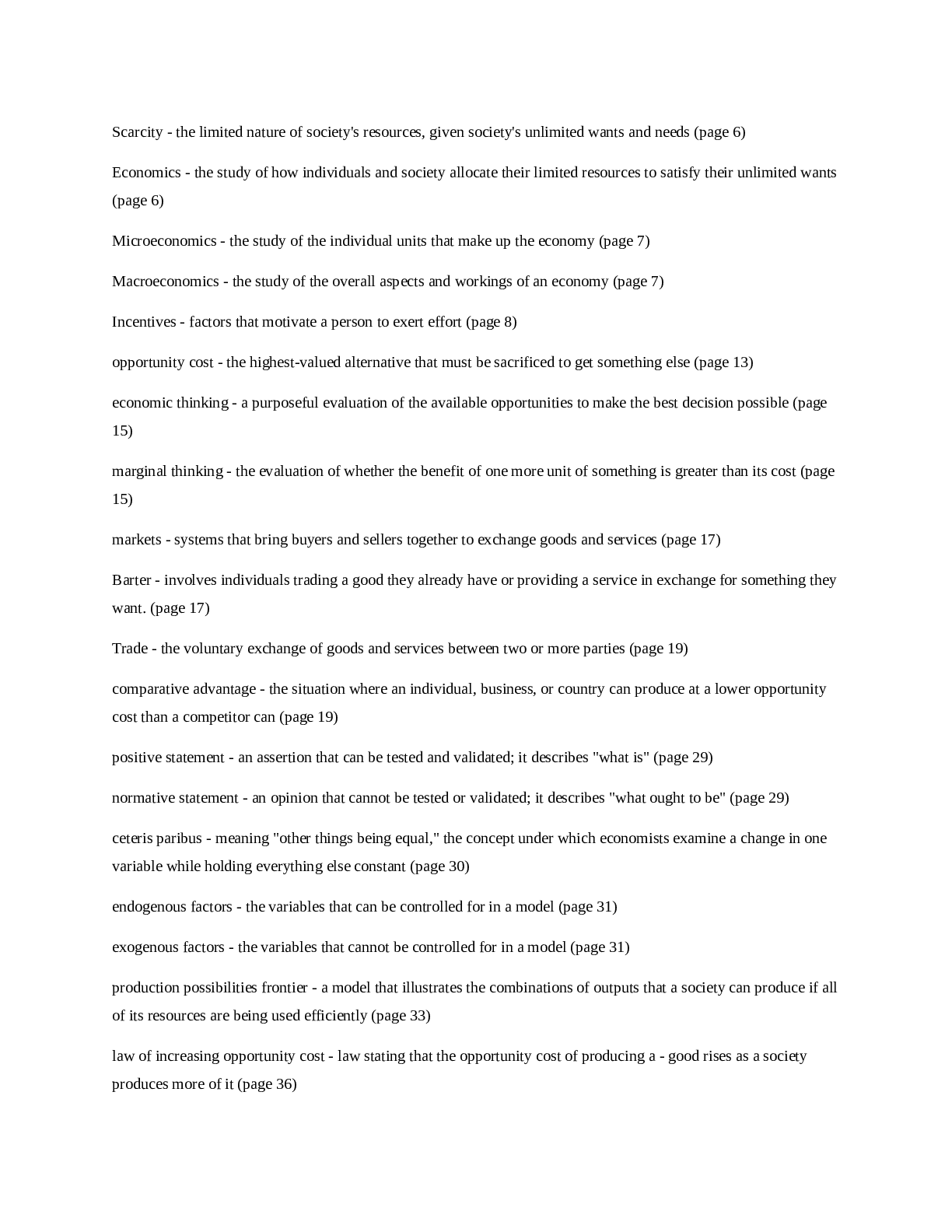
Reviews( 0 )
Document information
Connected school, study & course
About the document
Uploaded On
Oct 30, 2021
Number of pages
49
Written in
Additional information
This document has been written for:
Uploaded
Oct 30, 2021
Downloads
0
Views
59


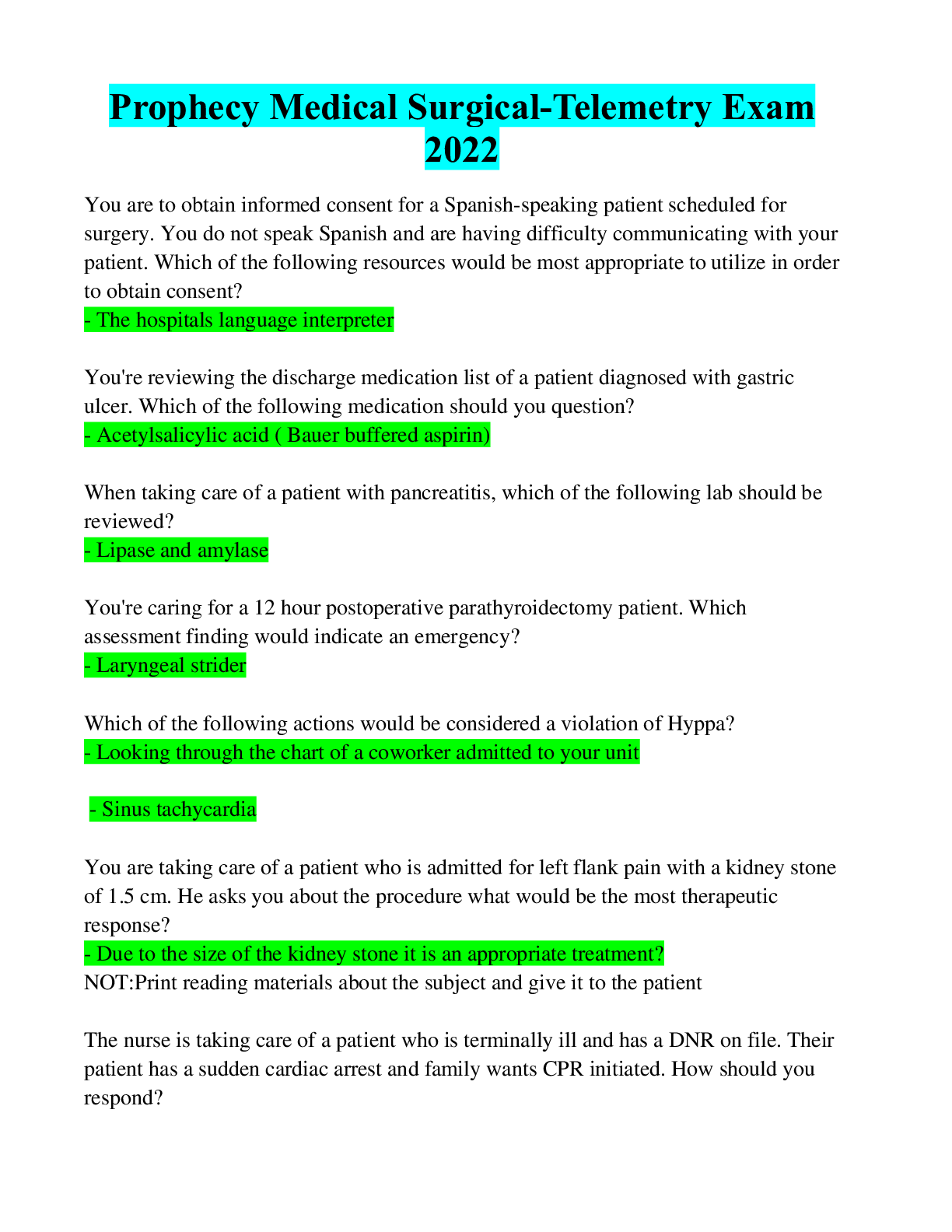
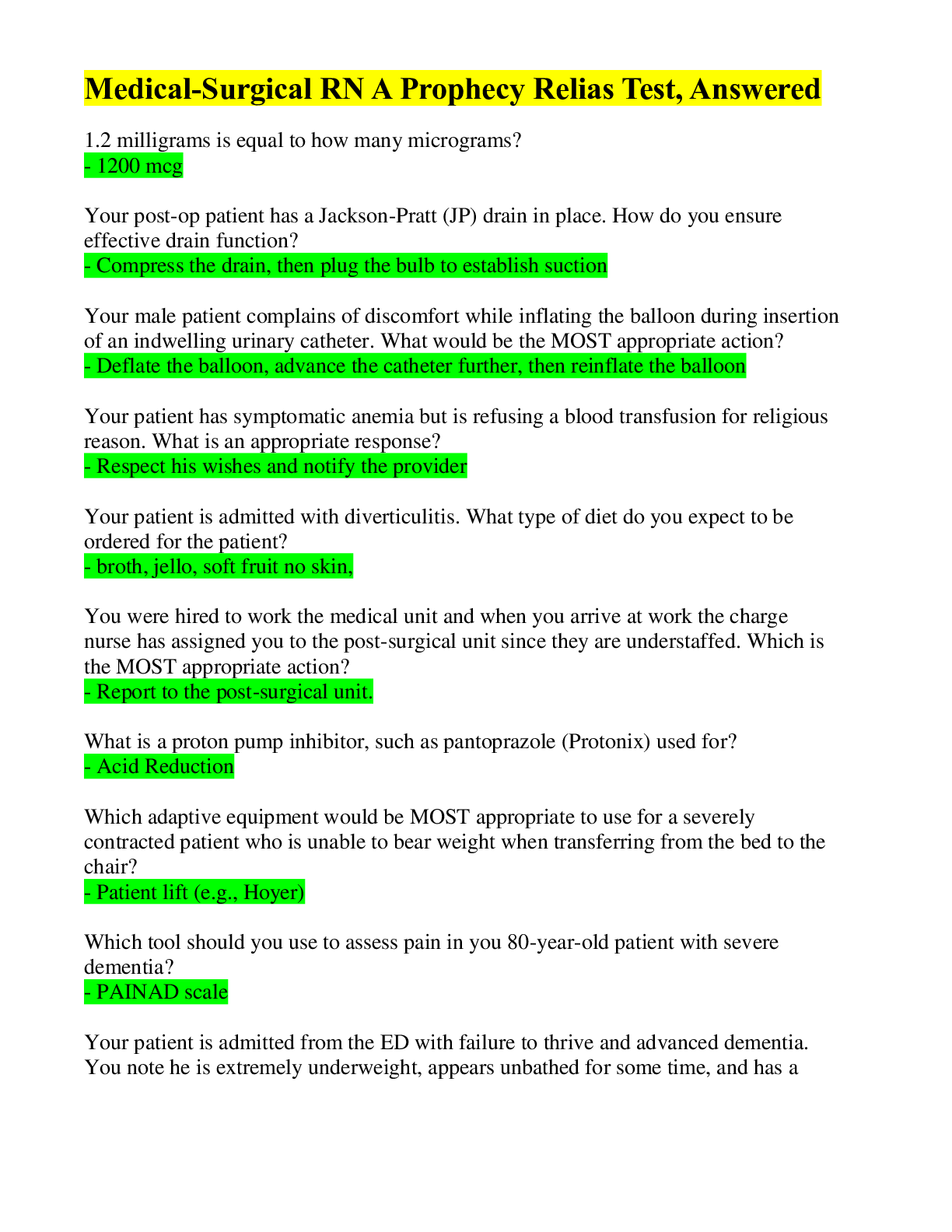
.png)

.png)
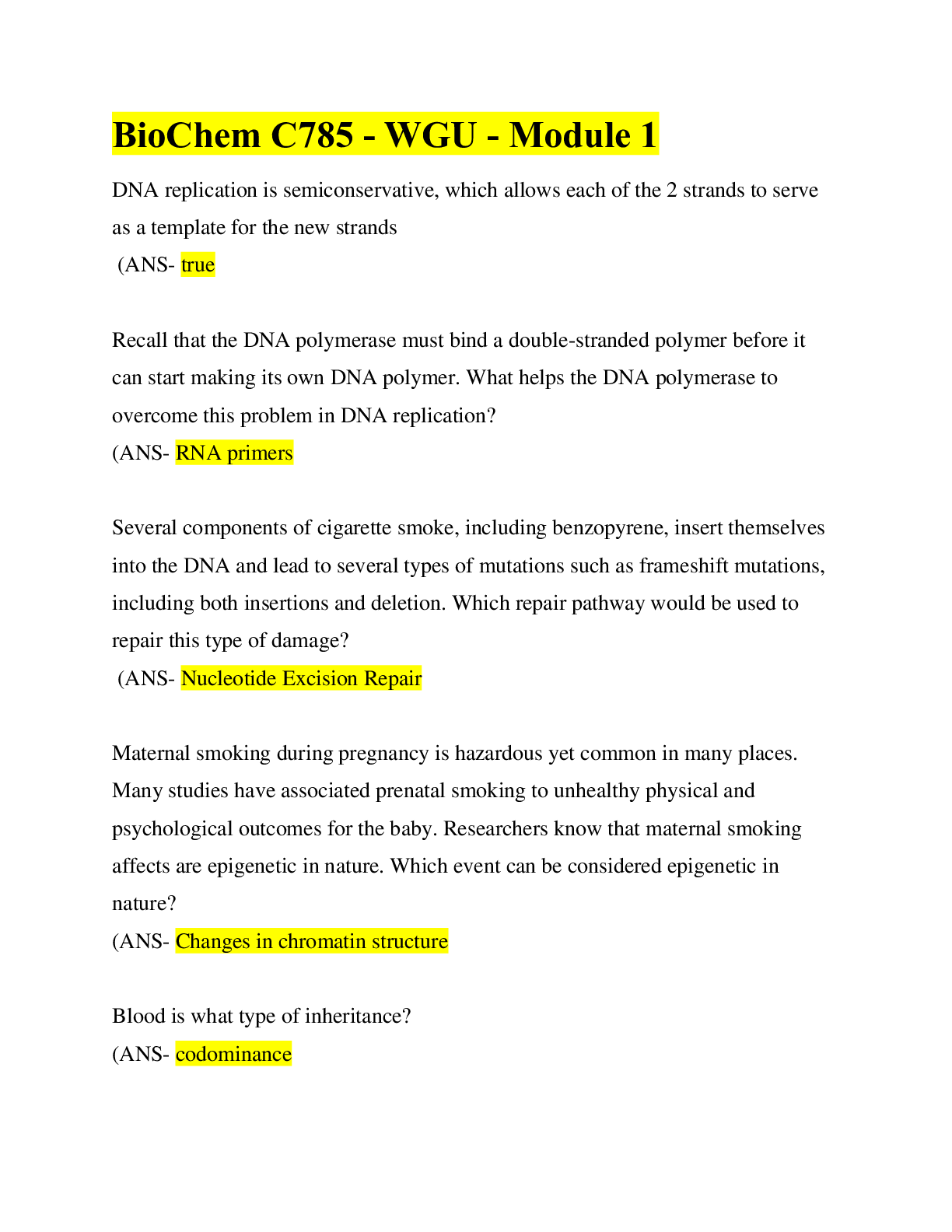

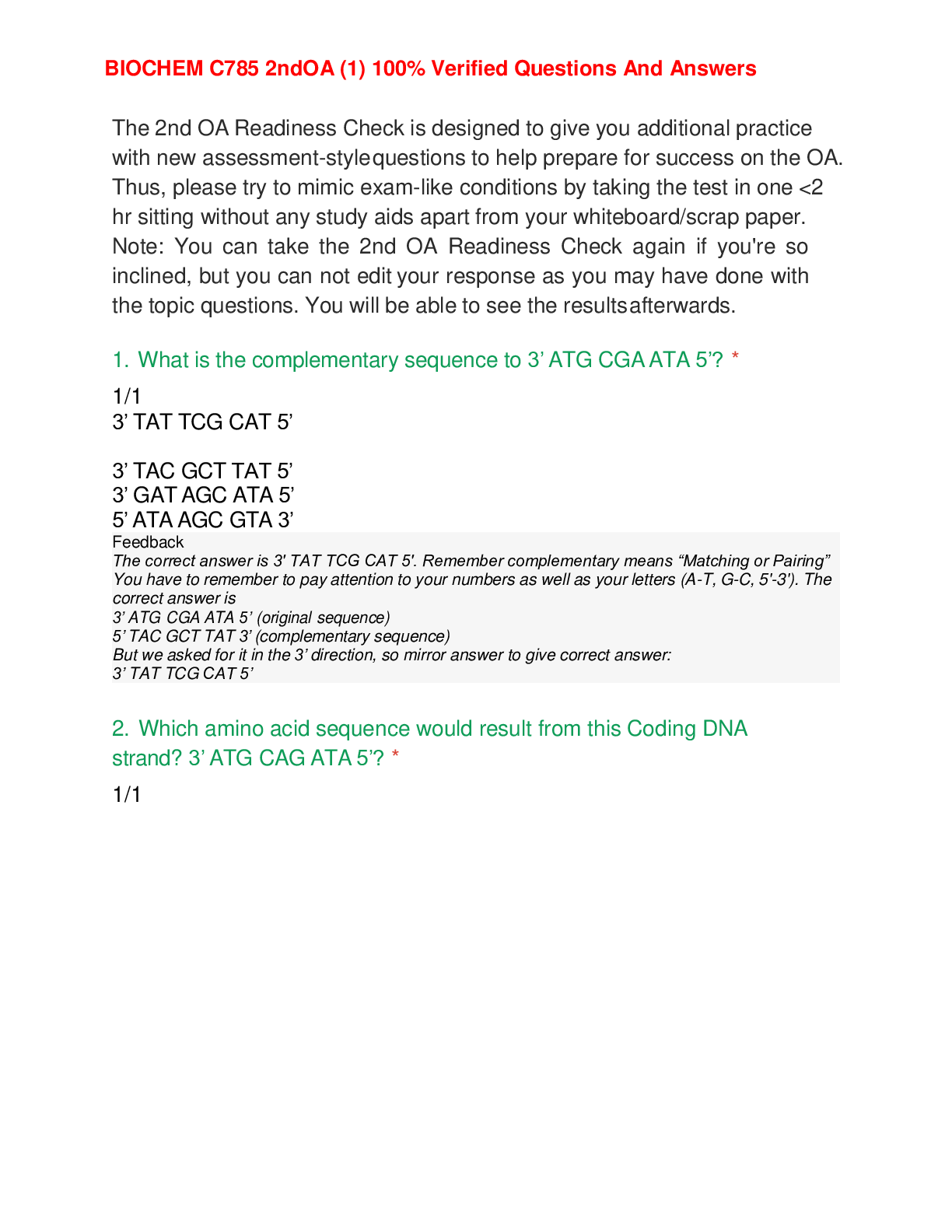

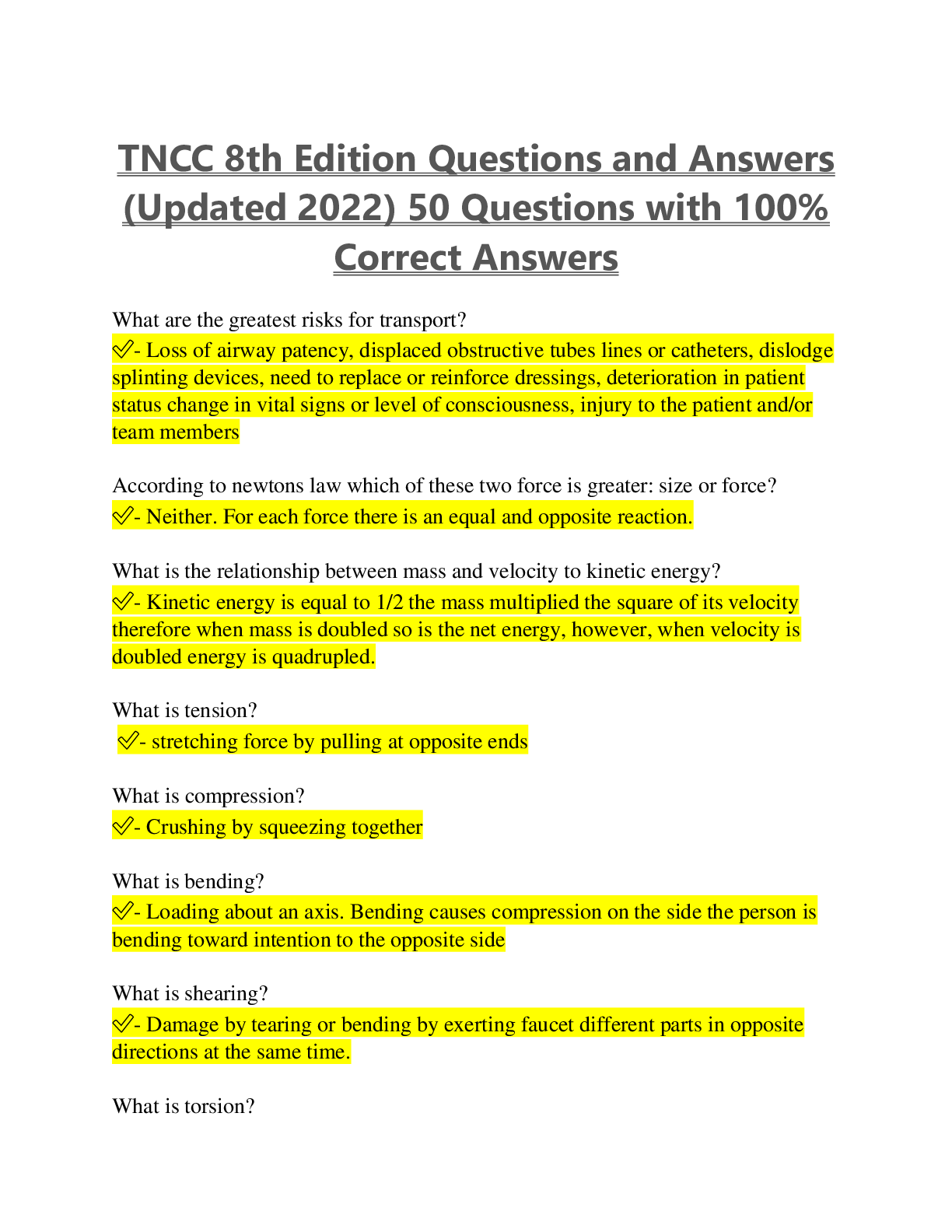
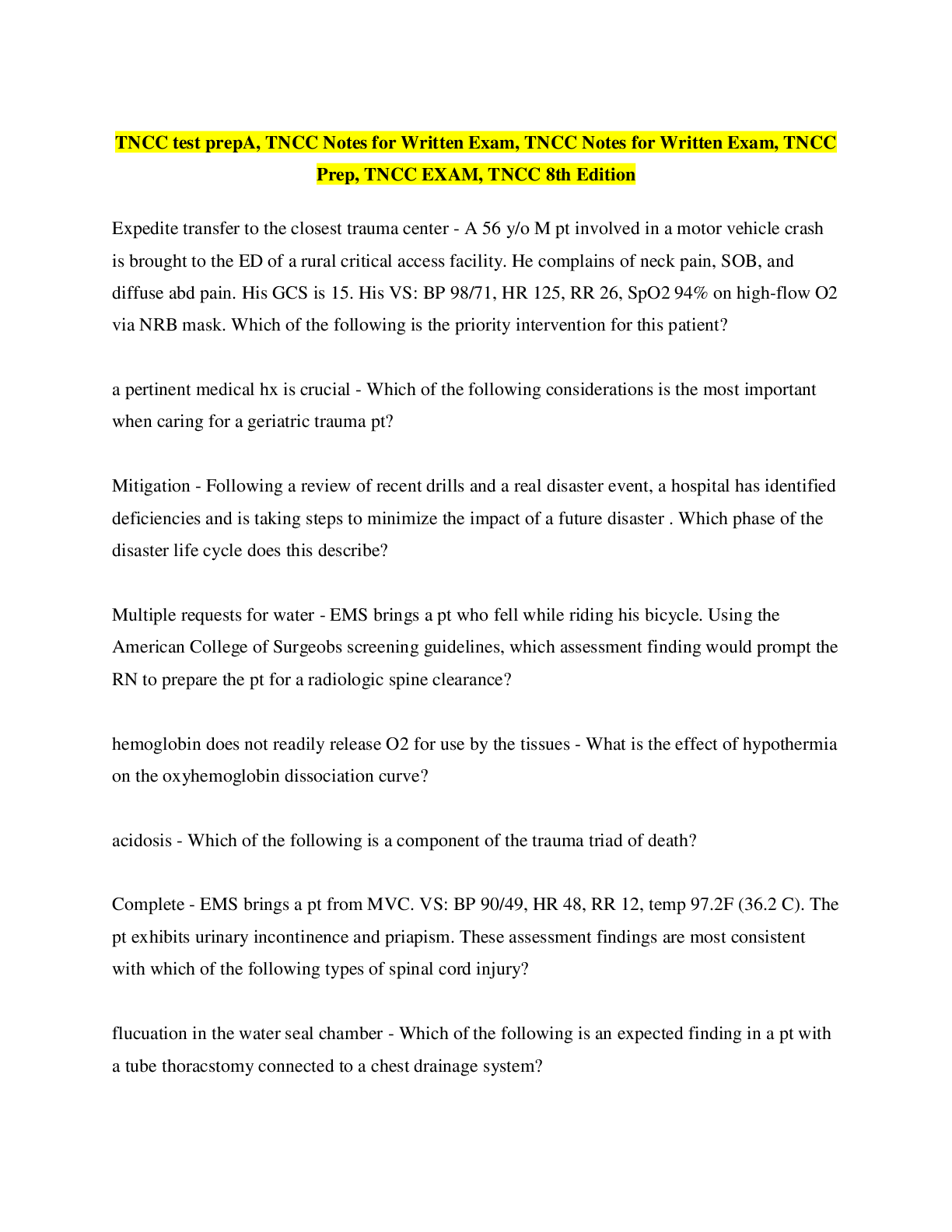
.png)
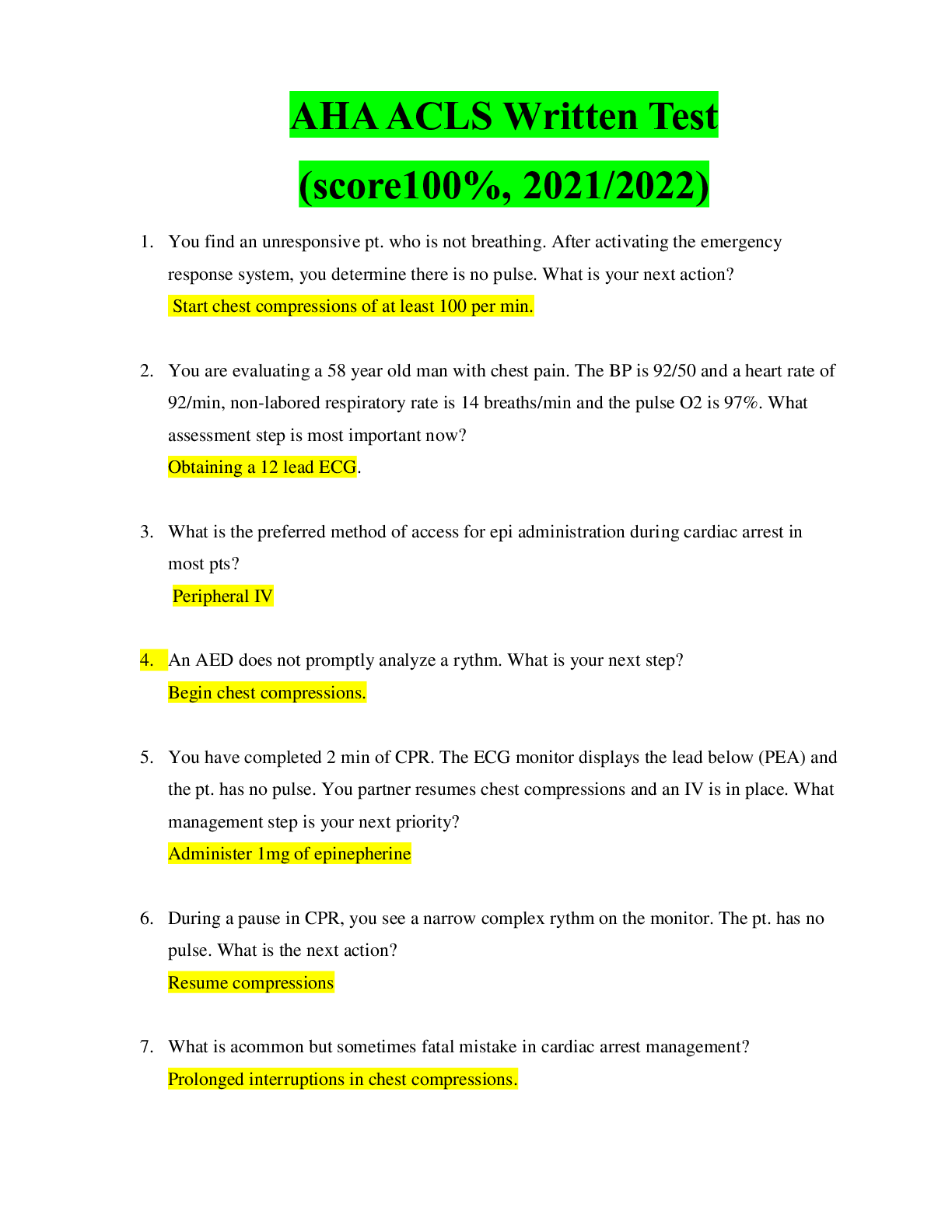
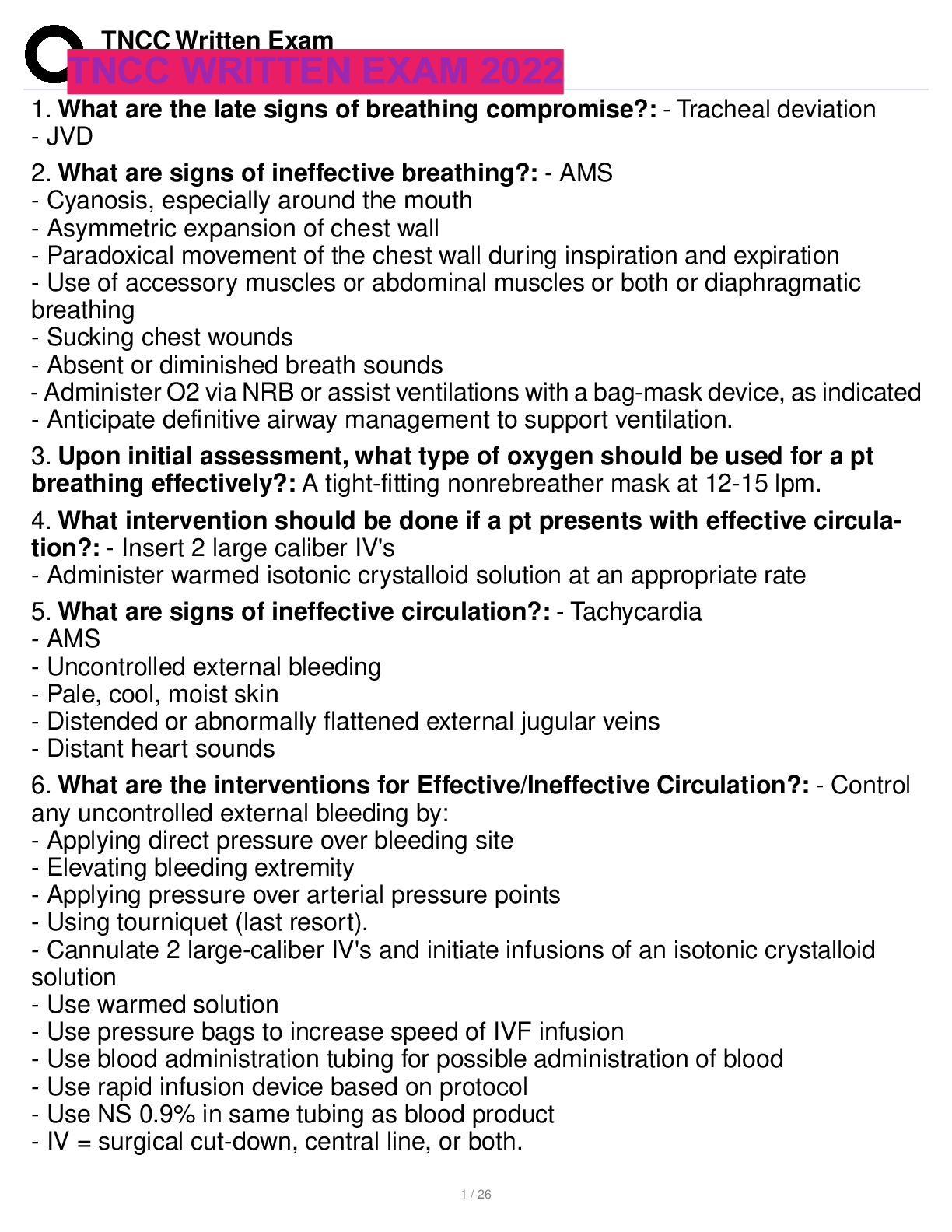
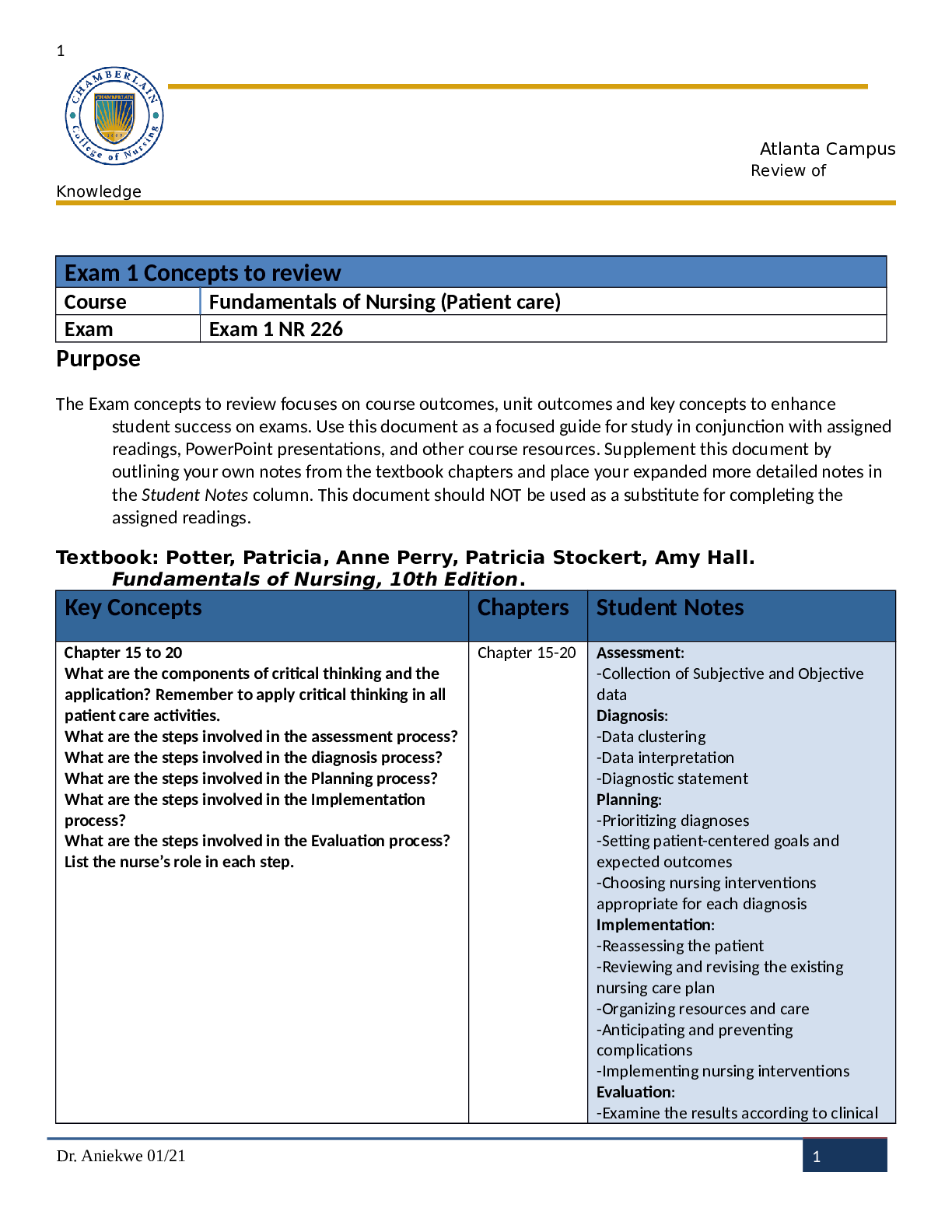
.png)
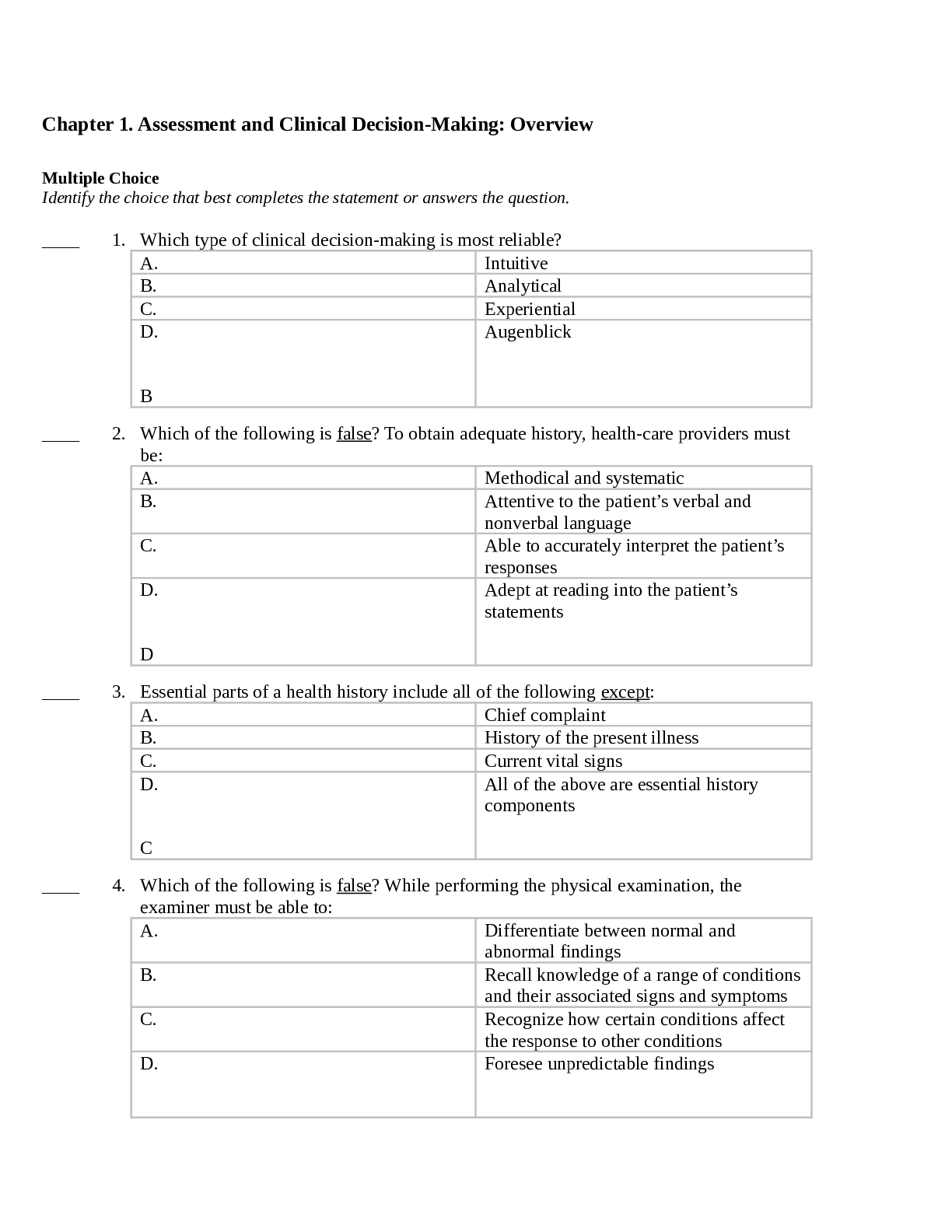
.png)
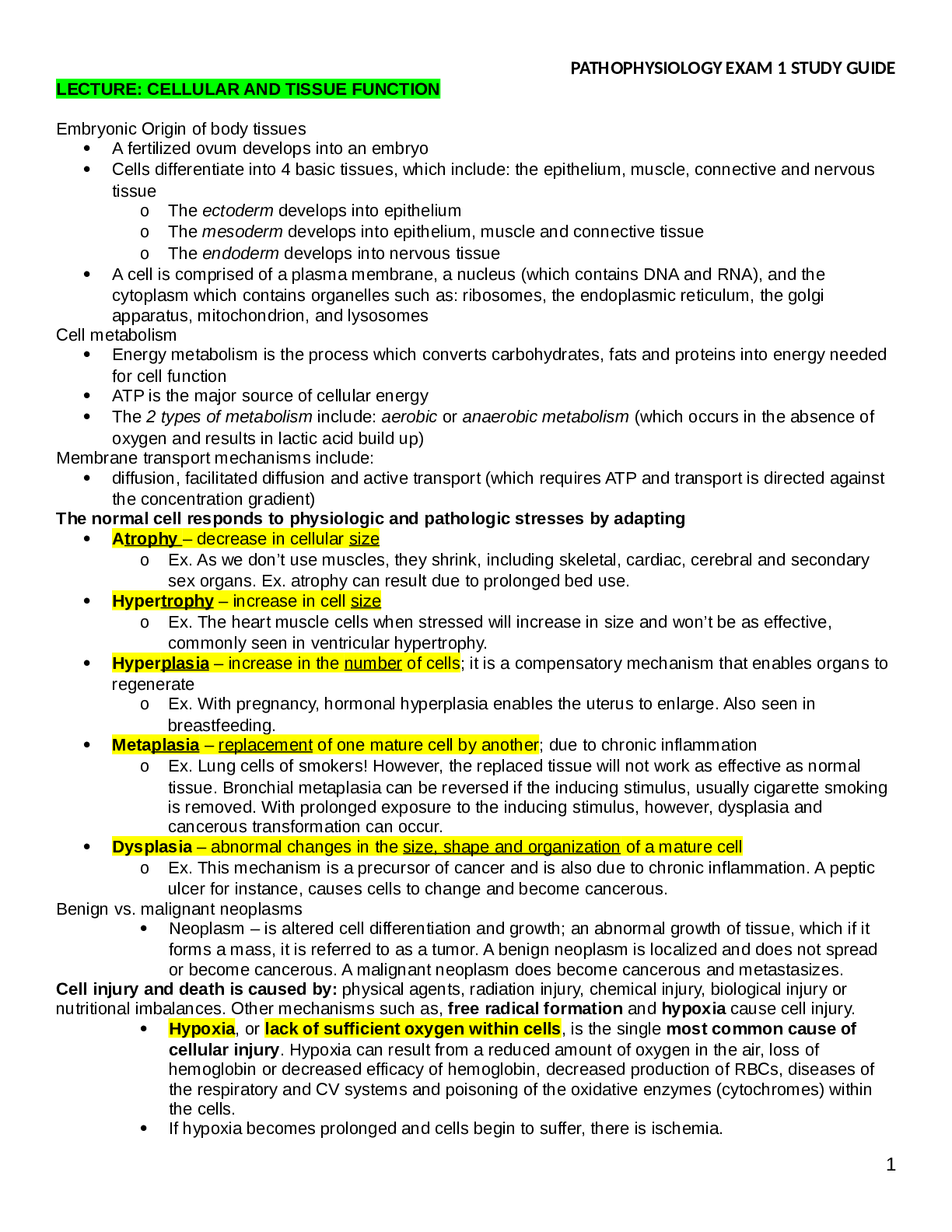
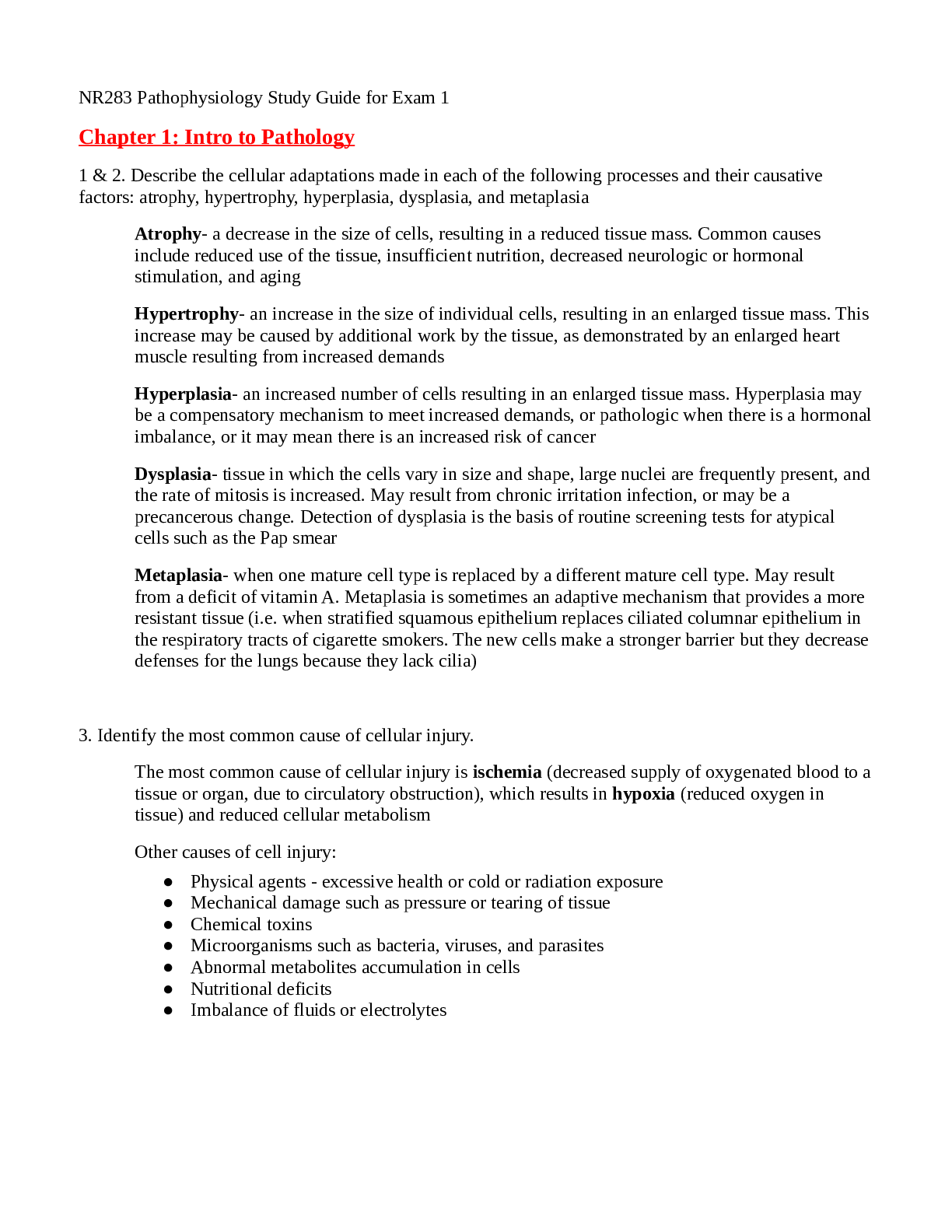
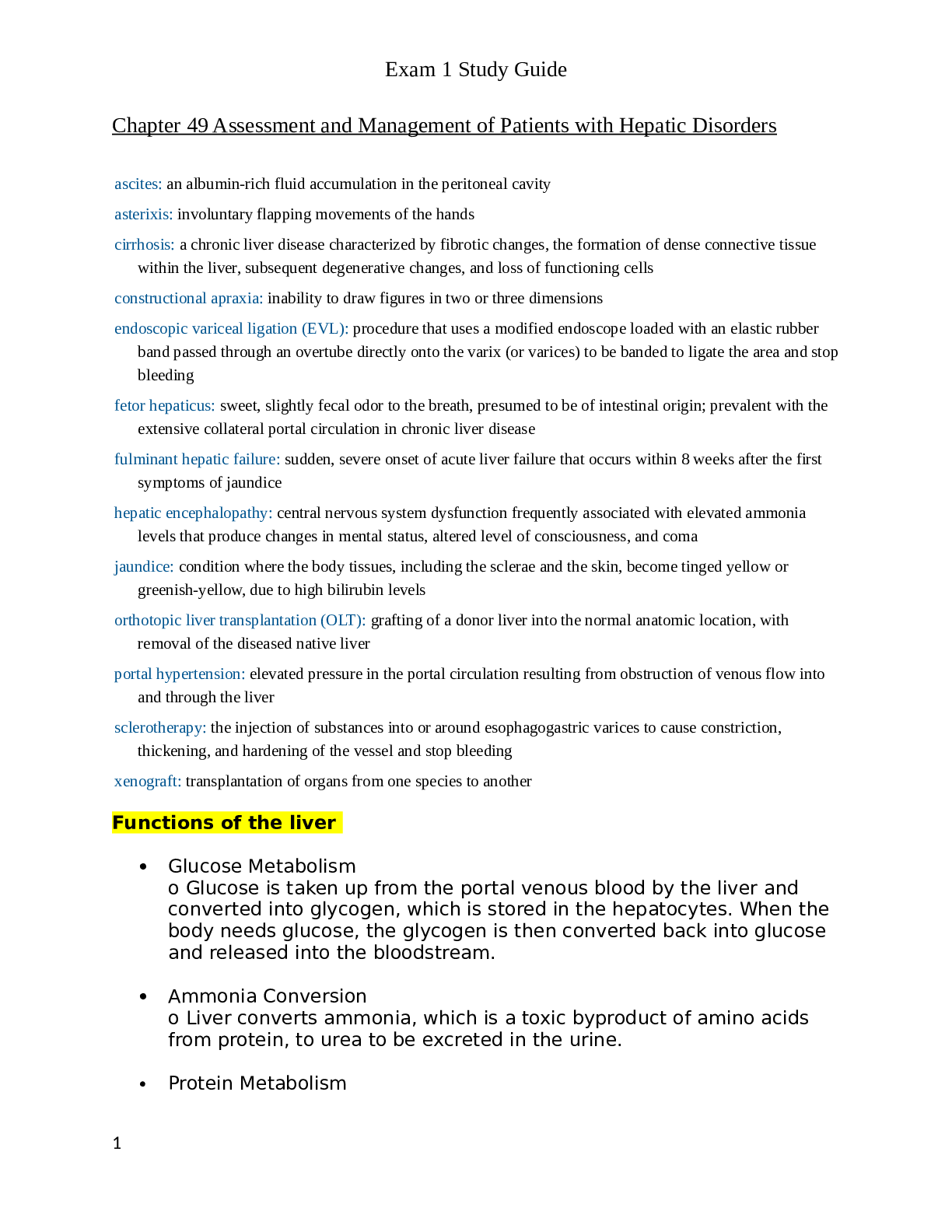
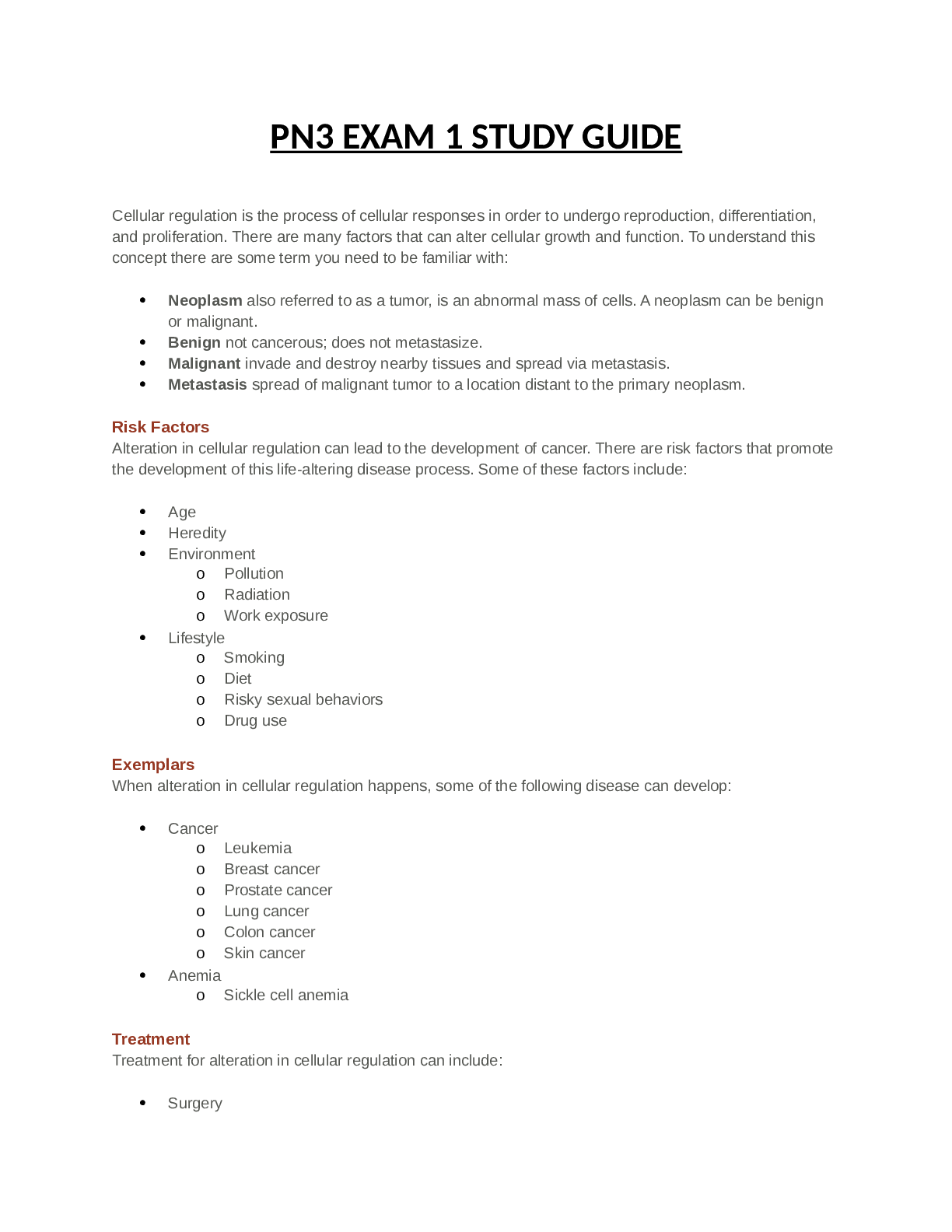
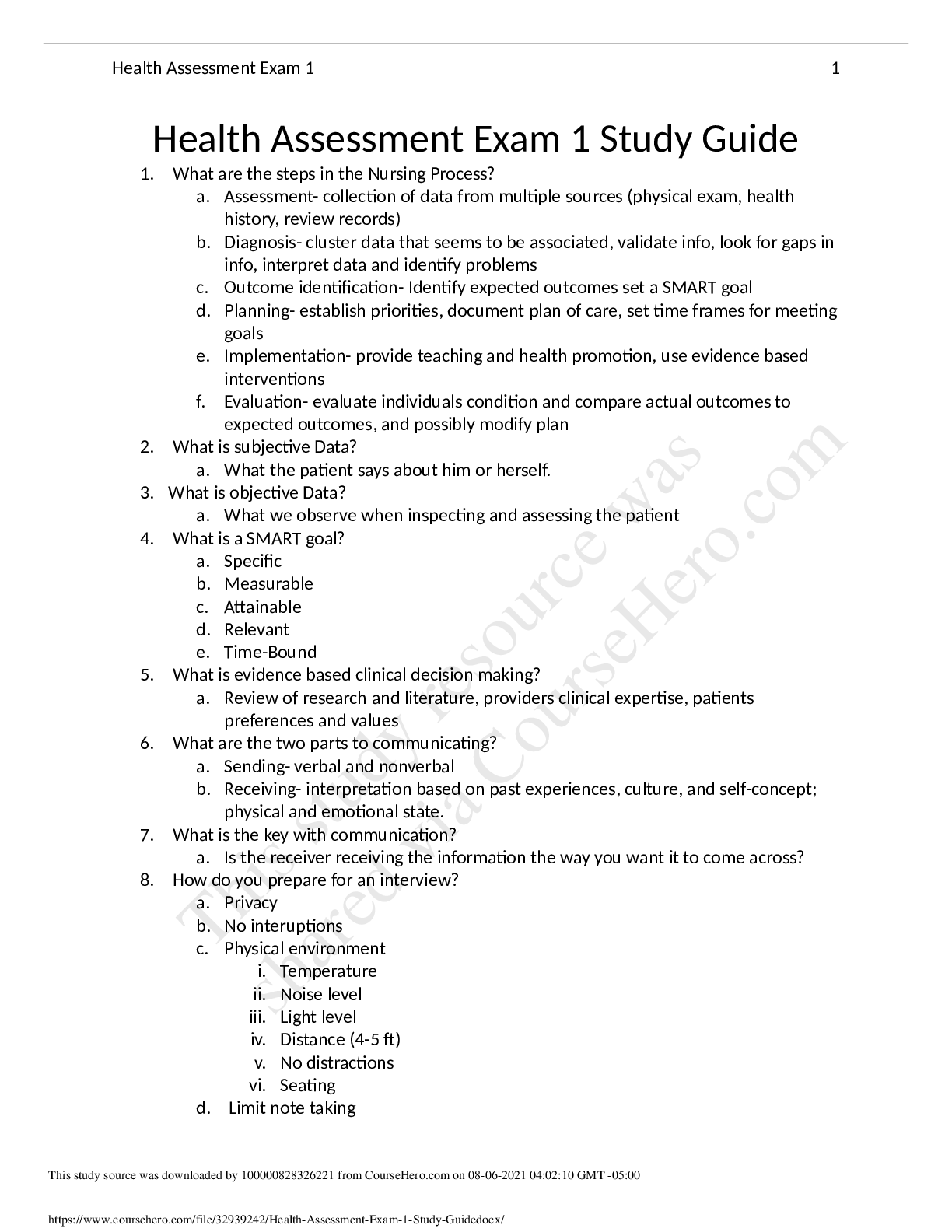
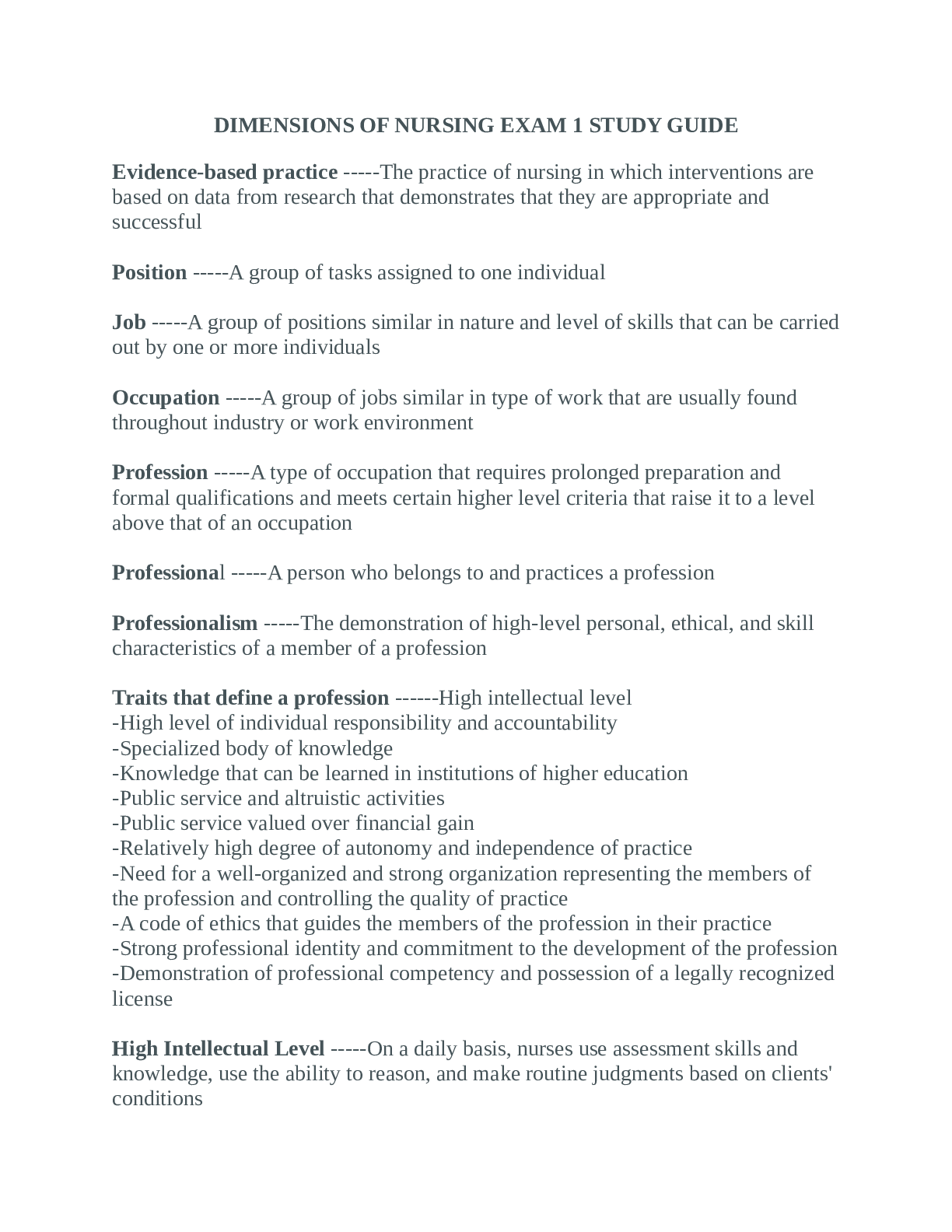

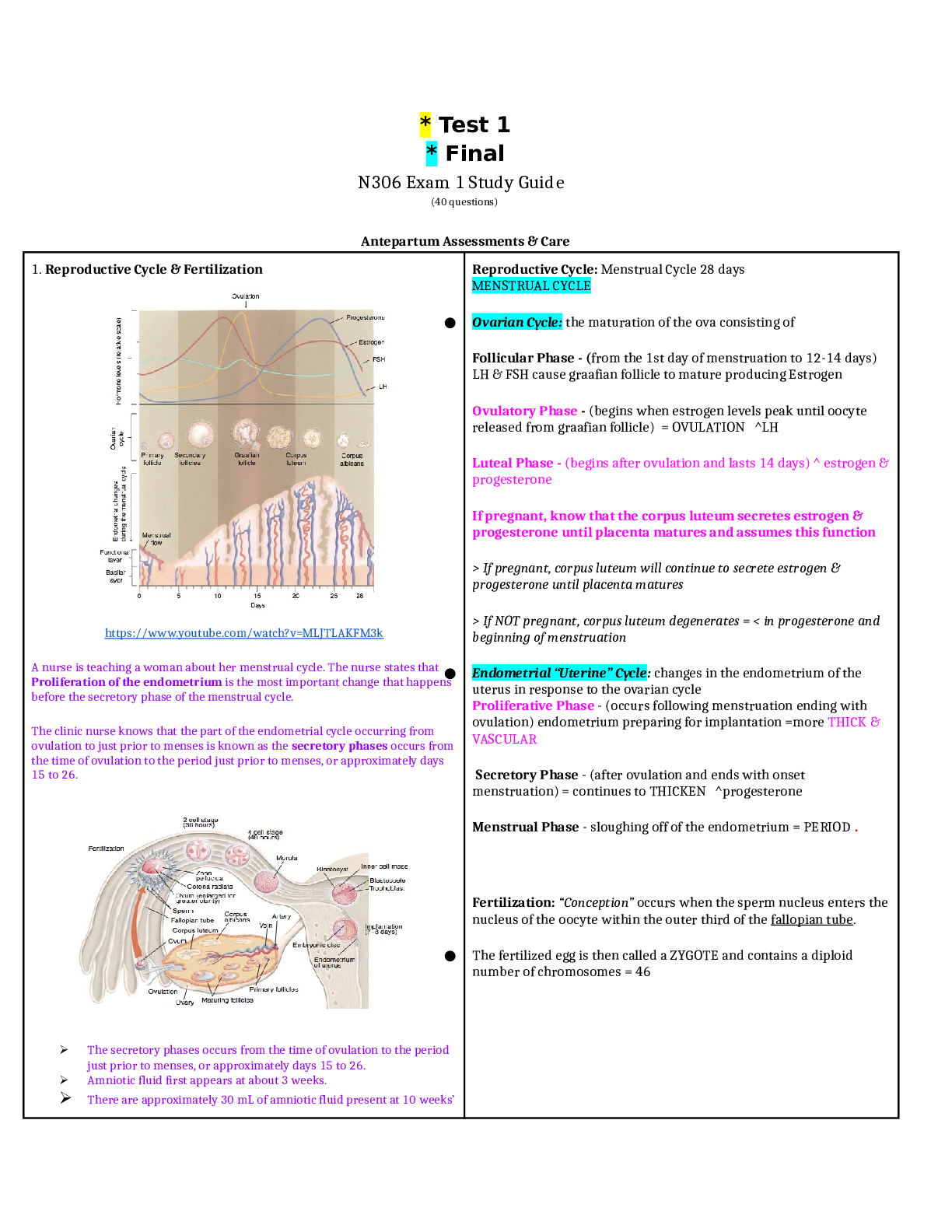

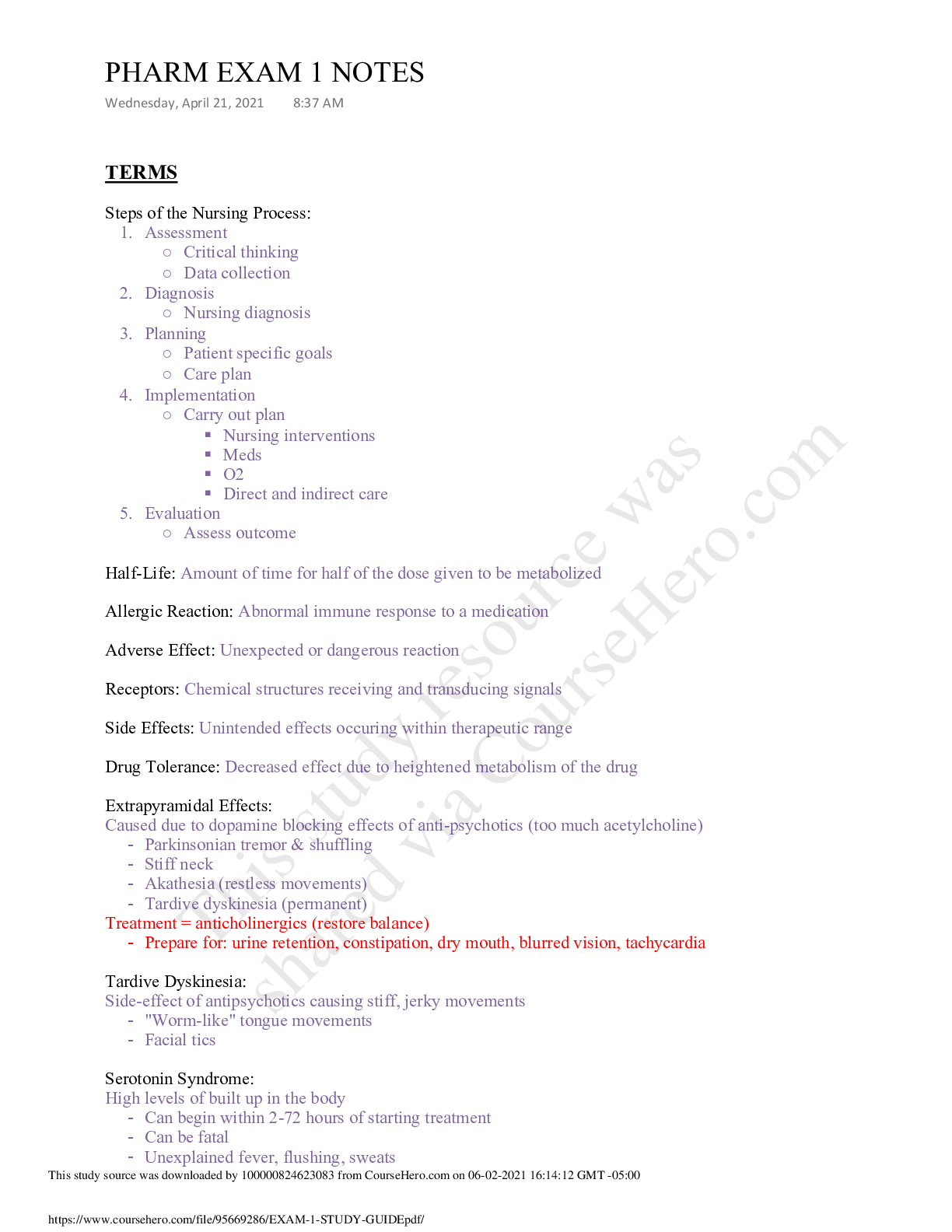

.png)

